Ever found yourself strumming away on your guitar, yearning for that elusive, intoxicating vintage tone that epitomizes the blues? The kind that seems effortlessly mastered by blues legends, bound in an enigmatic aura, making each note they play rumble with soulful expression? I’ve spent countless hours, guitar in hand, chasing that perfect storm of tone, time, and texture. The proverbial ‘X factor’ that distinguishes my favorite blues giants from the rest. And it wasn’t until I stumbled onto my first blues guitar pedal that I began to unlock this secret.
As a seasoned musician, my journey has been filled with thrilling gigs and extensive gear exploration. I’ve interviewed product experts, tested an array of equipment, and experienced firsthand the transformative power of the right pedal. From my experience, I will tell you that the most profound revolutions in my sound happened when I was introduced to certain essential guitar pedals – but more on that later.
Whether you’re a budding blues enthusiast or a seasoned player wishing to enrich their sound palette further, you’re in the right place. With this article, we’ll dive into the world of blues guitar pedals – shining a spotlight on some extraordinary game-changers that could reshape your soundscapes like never before. Yearn no more for that vintage tone. With the right pedals at your feet, it’s time to command the blues like never before.
Top-Rated Blues Guitar Pedals
| Pedal Name | Type | Tone Characteristics | Controls | Bypass Type | Power Supply |
|---|---|---|---|---|---|
| Ibanez Tube Screamer | Overdrive | Warm, creamy, mid-range emphasis | Drive, Tone, Level | True Bypass | 9V Battery/Adapter |
| BD-2 Blues Driver | Overdrive | Crunchy, tube-like, responsive | Level, Tone, Gain | Buffered Bypass | 9V Battery/Adapter |
| Keeley Reverb | Reverb | Rich, high-fidelity, modulated | Decay, Level, Reverb | True Bypass | 9V DC Adapter |
| Origin Effects RevivalDrive | Overdrive | Detailed, amp-like, customizable | Multiple knobs for in-depth control | True Bypass or Buffered Bypass (Switchable) | 9V-18V DC Adapter |
| Electro-Harmonix Big Muff | Fuzz | Saturated, sustain-rich, harmonic | Volume, Tone, Sustain | True Bypass | 9V Battery/Adapter |
Ibanez Tube Screamer
Best for classic blues rock tone

As a seasoned blues guitarist, the Ibanez Tube Screamer distinctly etches into my memories as a valuable companion. Measured against intense contenders like the BD-2 Blues Driver and Electro-Harmonix Big Muff, this pedal rises triumphant due to its distinct traits.
The ‘tube screamer vs fuzz face’ debate has tormented blues enthusiasts for years. However, the singular charm of the Ibanez Tube Screamer lies in its unrivalled low gain overdrive, a tone appropriate for classic blues rock. Reminiscing a live performance years ago, my band was slated to play a tribute concert to Stevie Ray Vaughan. I wanted to replicate his iconic tone, and the Tube Screamer did just that – delivering transcendent overdrive with a punchy mid-range that cut through the mix.
But let’s shine a light on the other side. Compared to Origin Effects RevivalDrive, this stompbox cannot impersonate an overdriven tube amp as authentically, and may lack the desired diversity for some. In the presence of Keeley Reverb, it also doesn’t offer ambiance effects.
Nonetheless, the Tube Screamer forms a necessary essence in every blues guitarist’s pedal artillery.1 Its lasting significance is reflected in both its classic tone and my personal journey with it.
Pros:
- Unrivaled low gain overdrive perfect for classic blues rock.
- Offers a punchy mid-range ideal for cutting through the mix.
Cons:
- Lacks tonal diversity compared to some newer pedals on the market.
- Does not offer ambient effects like reverb or delay.
Engaging in the exploration of Overdrive, Fuzz, and Distortion, the Ibanez Tube Screamer stands commanding within the storied lineage of top-rated blues guitar pedals, beautifully encapsulating the sound of blues rock.
BD-2 Blues Driver
Best for responsive blues drive
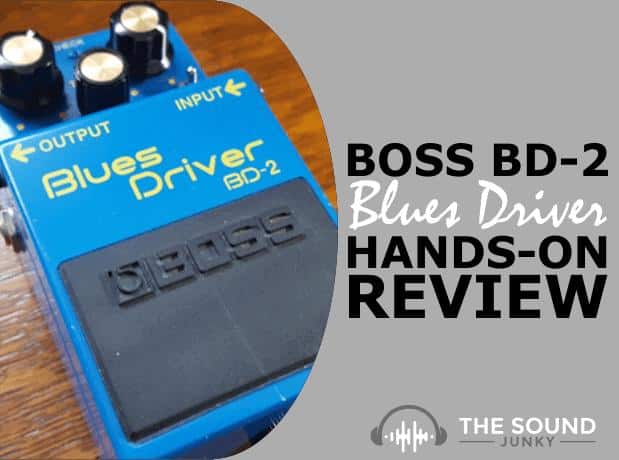
The BD-2 Blues Driver has been a cornerstone in my journey to achieve the ultimate blues tone. Its impressive responsiveness to picking dynamics is what endeared me to it as the best overdrive for blues, an assertion I maintain to this day. I’ve used numerous essential guitar pedals, but the BD-2 stands out in its ability to enhance the guitar’s emotive expression—essential for any blues player.
I recall watching a close friend of mine deliver a stirring performance on a small stage. His fingers danced on the fretboard, meticulously teasing out melodious tones, backed by the depth of the BD-2 Blues Driver. It was an unforgettable experience, more so because he was using the exact same model I owned. The way the BD-2 beautifully amplified every whisper of emotion from his guitar was evocative.
Pros:
- Enhances dynamic range, perfect for emotive genres like the blues.
- Provides a clean, distinct tone, bringing purity to your sound.
Cons:
- Not as versatile for heavier music genres.
- The price might be a bit steep for beginners.
When compared to the Ibanez Tube Screamer, the BD-2 offers more dynamic range and brings out the soul of the blues more. The Keeley Reverb, while great for adding depth, doesn’t match the BD-2’s performance when it comes to accentuating picking dynamics.
The BD-2 Blues Driver has certainly earned its place in the list of Top-Rated Blues Guitar Pedals. Its performance and ability to elevate one’s musical expression make it a worthy addition to any blues guitarist’s collection. As we move forward, we’ll dig into more pedals and their unique qualities in our quest to craft the perfect blues tone.
Keeley Reverb
Best for lush ambient landscapes

As a seasoned blues guitarist and content creator, I’ve adored how the Keeley Reverb has broadened my sonic landscape. In creating multiple articles and videos about blues guitar pedals, I’ve come to understand and appreciate the Keeley Reverb as an essential tool in creating a deep sense of space and atmosphere within my tunes. Its contribution has been instrumental in shaping my signature blues tone.
I recall once recording a session in my home studio with this trusty reverb pedal. The deep, lush reverbs blooming effortlessly from it added the perfect ambient touch to my blues phrases. This experience affirmed what I always believed – the Keeley Reverb pedal holds tremendous potential for any blues musician looking to add depth and personality to their sound.
Here’s a quick summary of my experiences with the Keeley Reverb:
Pros:
- Provides deep, lush reverbs that complement the blues genre perfectly.
- Durably built, ensuring longevity even with heavy use.
Cons:
- The pedal may be a bit expensive for some budgets.
- The vast array of controls might overwhelm beginners.
In comparison with the BD-2 Blues Driver and the Ibanez Tube Screamer, the Keeley Reverb stands tall in its unique offering. While the BD-2 and the Tube Screamer excel in adding dirt and grit to a blues tone, the Keeley reverb paints broad, vivid strokes of ambience and depth. Together, these pedals can form a sturdy foundation towards achieving an elusive, perfect blues tone.
My journey with blues guitar pedals led me to the Keeley Reverb, and it unlocked a world of tonal possibilities for me. It’s an essential pedal for crafting blues tones that ooze personality while keeping that vintage charm alive. The magic of the Keeley Reverb is its ability to transform your guitar tones into dense, atmospheric landscapes that are unique yet unmistakably blues.
Origin Effects RevivalDrive
Best for authentic vintage vibe
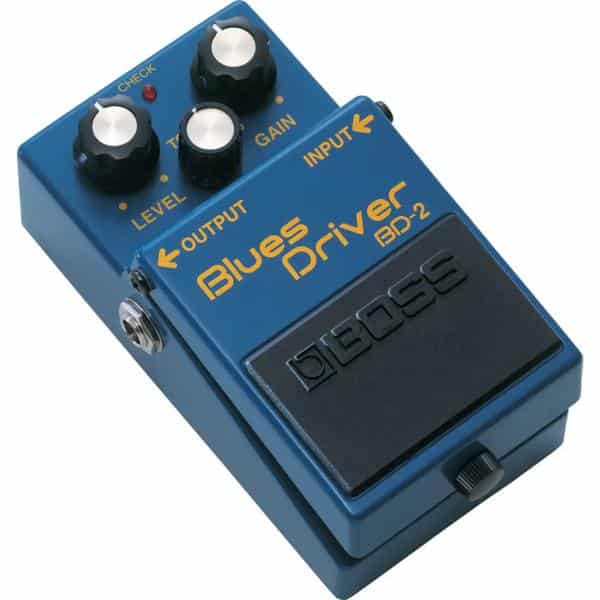
As an avid gear-head, I relish the thrill of engaging the Origin Effects RevivalDrive—the crown jewel of boutique guitar pedals for blues. It’s the vintage tone hunter’s dream-come-true, delivering an authentic, timeless sound that’s steeped in nostalgia.
One compelling instance perfectly sums up my affection for this pedal. While jamming with my band, I yearned for a distinct vintage tone. I cued up the RevivalDrive and was instantly transported to the golden era of blues with a tone that was unrivaled in its warmth and authenticity. The sonic landscapes I traversed with this pedal left an indelible mark on my musical journey.
Compared to the Ibanez Tube Screamer and BD-2 Blues Driver, the RevivalDrive truly stands apart. It infused my play with a lusty growl neither of the aforementioned pedals could match. Sure, the Electro-Harmonix Big Muff offers impressive sustain, but the dynamic and responsive touch of the RevivalDrive adds a whole extra dimension of expressability.
Pros:
- Authentic, rich vintage tone.
- Exceptionally responsive, allowing for dynamic playing.
Cons:
- Has a higher price point compared to other pedals.
- May require a learning curve for guitarists new to dial controls.
In conclusion, the RevivalDrive fills a crucial niche in any blues guitarist’s arsenal, delivering the heartfelt vibe of yesteryears. While it does come with a somewhat steep learning curve and a steeper price, the payoff is hard to beat for vintage tone enthusiasts. It’s an investment in not just a pedal, but a time machine—one that adds genuine, magnetic allure to your performance. After all, the blues is all about emotion, and the RevivalDrive ensures your sound is drenched in it.
Electro-Harmonix Big Muff
Best for creamy sustain and fuzz
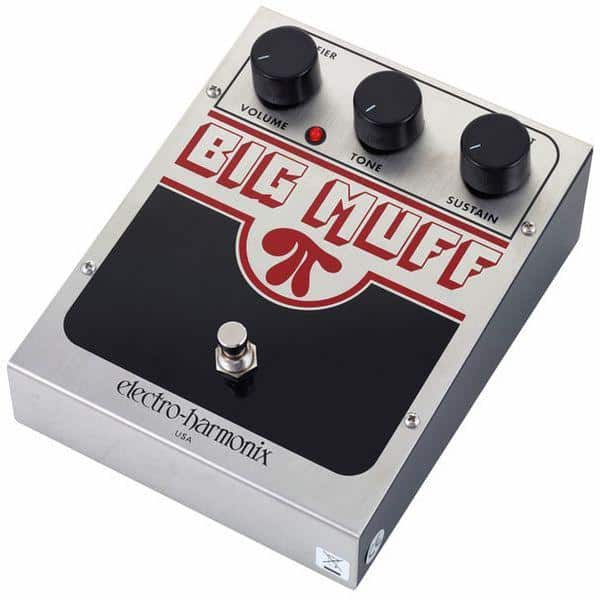
The Electro-Harmonix Big Muff has a special place in my heart as a cherished fragment of rock history. Having interviewed busloads of artists for whom the Big Muff was a game-changer, using this fuzz pedal doesn’t just generate great sound – it revives iconic musical moments.
Undeniably, the Big Muff reigns supreme if it’s a creamy sustain and robust fuzz that you’re after. Its germanium fuzz reverberates with a vintage tonal character loved by blues players since its inception. For me, playing the opening notes of “Red House” through a Big Muff took me back to a time when fuzz first exploded onto the music scene.
Compared to other top-rated blues guitar pedals like the Ibanez Tube Screamer or BD-2 Blues Driver, the Big Muff offers a thicker saturation and sustain. Its circuit design provides a more aggressive and raw fuzz, perfect for creating a commanding and distinct tone. It’s not as sonicly flexible as the Keeley Reverb or Origin Effects RevivalDrive, but what it does, it does phenomenally well.
Pros:
- Produces a robust and vintage fuzz.
- Excellent sustain for elongated notes.
Cons:
- Lacking in tonal flexibility.
- Aggressive fuzz might be overpowering for some.
To get that quintessential blues tone, you’ll need to contend with overdrive, fuzz, and distortion, and the Electro-Harmonix Big Muff is, in my opinion, a key player in this interplay. As we explore reverb, delay effects, and pedalboard configurations for blues, remember that the Big Muff’s raw power and legacy is what sets it apart from the rest. The memories I’ve created with it make it more than just a pedal to me— it’s a living, singing part of rock history.
Understanding Overdrive, Fuzz, and Distortion
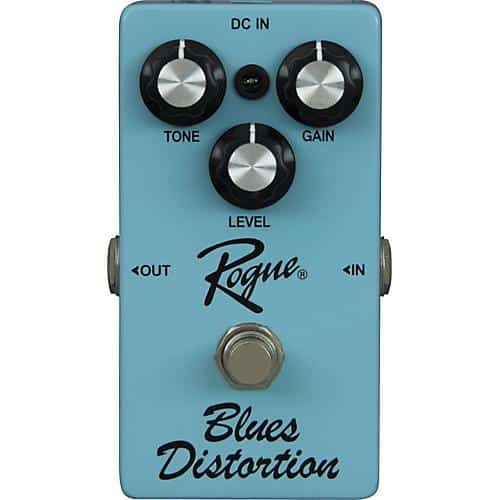
It was amidst the captivating world of Blues music, that I discovered my fascination for guitar effects. My passion driven pursuit to understand them and the journey that followed, transformed me from a young, curious Blues aficionado into an industry expert.
It’s an indescribable joy—the feel of a blues guitar in my hands, responding to the subtle nuances of my fingers. And what truly elevates the experience? The magical trinity of overdrive, fuzz, and distortion. My connection with this triad runs deep, fostered over countless hours of practical application and theoretical exploration.
Why do overdrive, fuzz, and distortion pedals feel like three different historical eras in blues history? Let’s crack the code. Each of these effects can drastically alter the sound of your guitar, opening new avenues of creativity and expression. They have defined different eras in the evolution of Blues, acting as bridges from one style to another, all the while preserving the genre’s roots in beautiful imperfection.
An overdrive pedal serves to add a real edge to your sound, emulating the gritty tone produced when vacuum tubes of an amplifier are driven hard, a trait quintessential to the early years of Blues. It’s a natural, warm, and dynamic sound reminiscent of icons like Eric Clapton and his Bluesbreaker pedal.
Contrastingly, a fuzz pedal imparts a much harsher tone. It clips your guitar signal until it’s square, producing a fuzzy, buzzy, and aggressive sound. Muddy Waters, a Chicago blues legend, was among the pioneers to introduce such a sound, marking a bold new chapter in Blues history.
The distortion effect, on the other hand, offers a midway point between overdrive’s warmth and fuzz’s aggression. It’s harsher than overdrive yet smoother than fuzz. The result is an edgy, crunching sound that became popular in the late 20th century with artists like Stevie Ray Vaughan leading the charge. Its powerful, punchy blues licks brought a fresh zeal to the genre.
Such is the magnificence of these three effects that they’ve shaped different eras of Blues history. Not just in their sonic properties, but the feel they impart. Each effect has its personality, molding and reflecting the artistic expressions of the musicians that wielded them.
If Blues is a language, then overdrive, fuzz, and distortion are the dialects that have helped refine its voice over the years. They’re a testament to the depth and breadth of Blues, a genre that’s reused and reinvented itself repeatedly, while always remaining true to its core.
As we delve further into our exploration of top blues guitar pedals, understanding these three effects will prove crucial. I hope to assist in this journey, sharing not just my technical knowledge but my personal insights from decades of playing and dissecting these classic Blues tones.
Exploring Reverb and Delay Effects
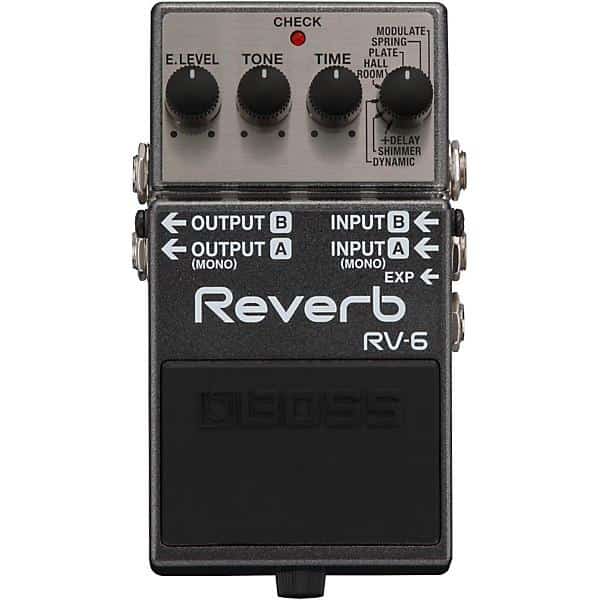
Over the years, my relationship with reverb and delay pedals has grown fonder and deeper. With each strum, I’ve felt a resonance that these pedals bring with their ability to shape the aura of a performance remarkably. And in blues, the richness and intensity of your performance can take a new level with the right amount of reverb and delay.
In my experience as a blues musician and gear enthusiast, I’ve evaluated countless pedals – reverbs, delays, overdrives, and whatnot. Each has left its mark on my understanding of creating powerful, emotive music. Among them, a reverb pedal that has remained close to my heart is the TC Electronic Hall of Fame. Its room-filling echo effect has often been my secret sauce, adding immense powerful depth to my blues guitar lines.
In blues, the space between notes is as telling as the notes themselves. Have you ever wondered how reverb and delay can take you there? These pedals don’t merely add afterthoughts to your notes; they make the space between those notes sing. And, let me assure you that the journey is nothing short of sonically fascinating. Once you step into this realm, the traditional concept of playing blues gets nuanced. Your guitar doesn’t just produce notes; it starts to evoke feelings, paint imagery and tell a story.
My journey with delay pedals has been equally riveting. If a reverb pedal is the painting on the canvas, a delay pedal is the frame that holds it together. The echo it produces is not merely a repetition of sound but a reflection of the musical space between two points in time. This very echo allows me to conduct the energy, driving the emotional intensity of my performances. And in blues, leveraging this dynamic effectively is indispensable.
When I first tried my hands on a delay pedal, I was floored by the array of possibilities it opened. However, it was essential to learn to tame this beast. I’ve spent countless hours practicing to blend it subtly, understanding how its intensity should ebb and flow with the rhythm of my blues licks.
In conclusion, exploring reverb and delay effects, to me, is akin to mastering the art of breathing life into your blues performances. It’s about feeling the pulse of the space between your notes and leveraging it to accentuate the emotional resonance of your music. If you too venture down this path, there’s a beautiful melodic odyssey waiting to unfold. So, pick up that guitar, step on a reverb or delay pedal, and let the blues tell your story.
As we move forward, we’ll dive deeper into pedalboard configuration for blues. This knowledge will allow you to add both warmth and depth to your overall sound, enhancing the raw, authentic feel so integral to blues music. Stay tuned!
Pedalboard Configuration for Blues
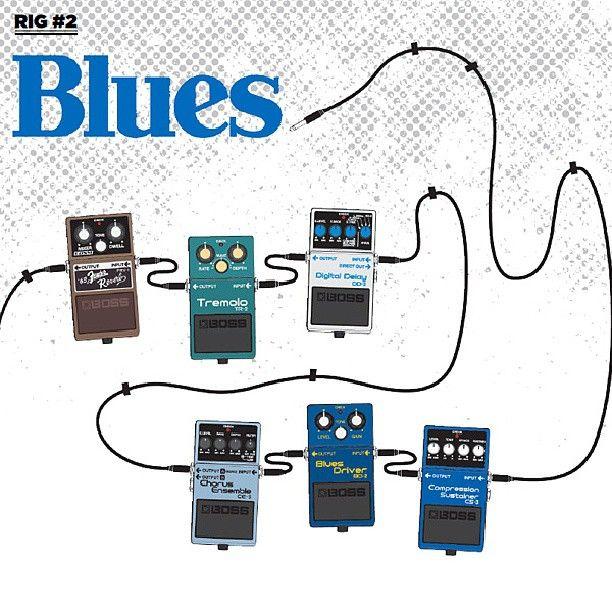
If there’s one thing I’ve gleaned from my years on and off stage, it’s that blues is a genre built on soul and authenticity. It demands a tune that sings from the heart, resonating not only in the ears but also in the spirit of each listener. That said, achieving such blissfully resonant blues rock tone is no small feat. It’s not simply about gathering a bunch of guitar pedal recommendations and hooking them up willy-nilly.
Crafting rigs, I’ve learned, is a delicate art that calls for careful strategy. The search for must-have effects for blues can be an exciting exploration, akin to fine-tuning a story until it sings. I’ve poured considerable personal insight into this endeavor, a sense of fulfilment that comes from tailoring the perfect setup, chiseling the edges until every note rings true to its core meaning.
At this point, I’d like you to imagine something. Building the ultimate blues pedalboard is like composing a symphony, but for your feet. Are you ready to conduct your masterpiece?
Visualize your pedalboard as a canvas and each pedal as a distinct brushstroke, each one unique in its contribution to your overall sound. Sculpting your authentic sound starts at the foundation, meaning that pedal order is critical. Your distortion and overdrive pedals, such as the classic Ibanez Tube Screamer and the dynamic BD-2 Blues Driver, should typically come first in your chain to drive the raw tone. Then comes the modulation and reverb effects, like the Keeley Reverb, to enhance and add texture to that tone.
However, remember the golden rule of pedalboards – there are no hard and fast laws. In the end, it’s a deeply personal journey which may lead you to unconventional arrangements and unexpected discoveries. Don’t be afraid to go off the beaten trail and innovate.
My experiences have taught me that a well-configured pedalboard is more than just its constituent parts. It’s a reflection of your personal aesthetic, and a manifestation of your musical soul. Pick out your pedals wisely, understanding the unique virtues each one brings. The Origin Effects RevivalDrive, the Electro-Harmonix Big Muff – each of these is a testament to the incredible diversity available for crafting that perfectly customized blues tone.
As we dive deeper into the intricacies of blues pedalboards in the sections to come, remember that it’s essential to maintain that tactical awareness. Wit and wisdom, in equal measures. Embrace the challenge, cherish the journey, and let the music you create be an emblem of your personal narrative.
FAQs
What are the best blues guitar pedals?
The top blues guitar pedals include:
– Ibanez TS9 Tube Screamer
– Fulltone OCD
– Boss BD-2 Blues Driver
– Electro-Harmonix Soul Food
– MXR M294 Sugar Drive Mini.
Why are these guitar pedals essential for blues?
These pedals are essential for blues because they offer superior tone shaping capabilities required for the genre. For instance, Tube Screamer is renowned for its ability to push tube amps into smooth, natural sounding overdrive, ideal for creating blues tones. Similarly, Fulltone OCD delivers the vintage overdriven sound which blues players love. Boss BD-2 Blues Driver offers creamy, yet crunchy tones with a high level of control, perfect for expressive blues solos. Lastly, Electro-Harmonix Soul Food works well for pushing your valves to give a crisp sound while maintaining the classic blues feel.
How do blues guitar pedals improve the sound?
Blues guitar pedals, typically overdrive and distortion pedals, are designed to shape and enhance the guitar tone. They can add warmth, depth, and character to your sound, making it more resonant and dynamic. The blues genre is known for its expressive and emotive style, which can be beautifully conveyed using these pedals. They allow the guitarist to push their amplifier for a richer, fuller sound while also allowing them to control the level of grit and grain in their tone.
Conclusion
As we bring this blues journey to its final note, let’s reflect on how the right pedal can be both a testament to tradition and a beacon for future innovation. With an abundance of top pedals for blues guitar at the tips of our fingers, it’s clear that boutique guitar pedals have a significant role in crafting an authentic blues tone. Each piece of hardware we’ve explored—from the Ibanez Tube Screamer to the Keeley Reverb—holds a unique story, contributing to a rich tapestry of sound and experience.
Understanding the subtleties between overdrive, fuzz, and distortion, or mastering the depths of reverb and delay effects, gives us deeper insight into the dynamics of these essential instruments. Pedalboard configuration becomes less of a task, and more of a craft, a personal touch to the timeless tradition of blues.
Remember, the selection I’ve presented is not merely a product of research, but an echo of my own journey with blues guitar pedals. It’s a tribute to the endless hours, the countless performances, and the enduring passion dedicated to the blues. So, equip yourself with these keen insights, harness the power of these pedals, and continue to honor—and innovate—the legacy of blues.